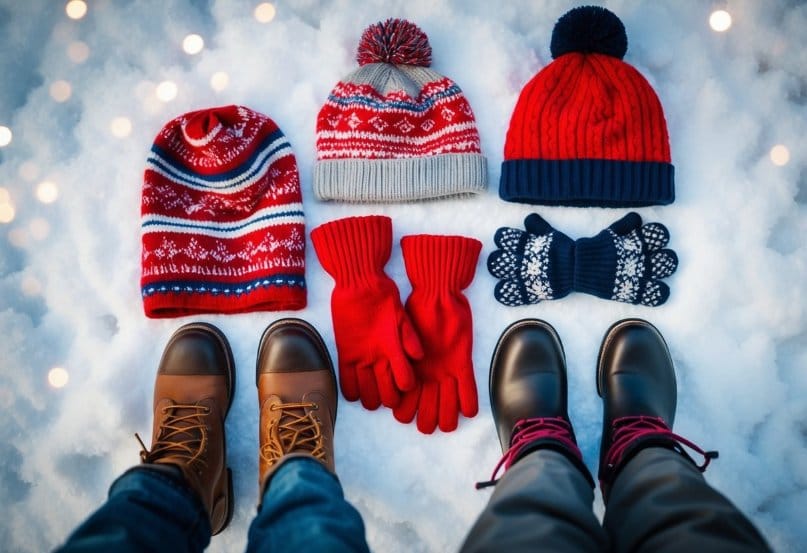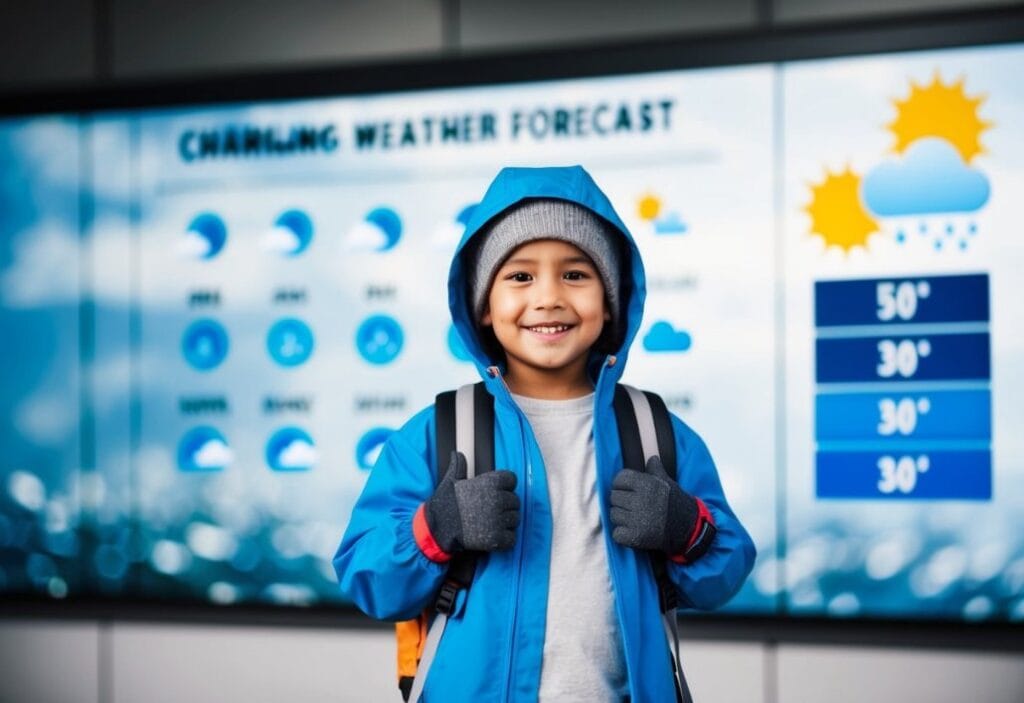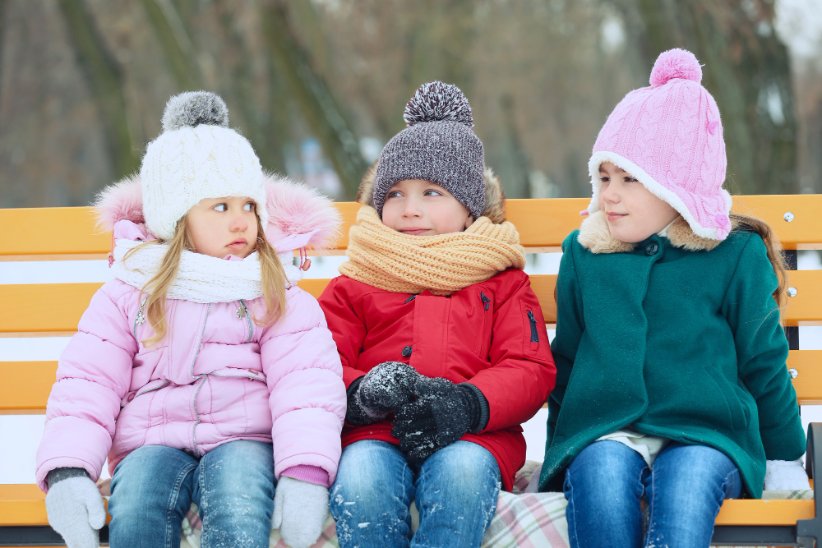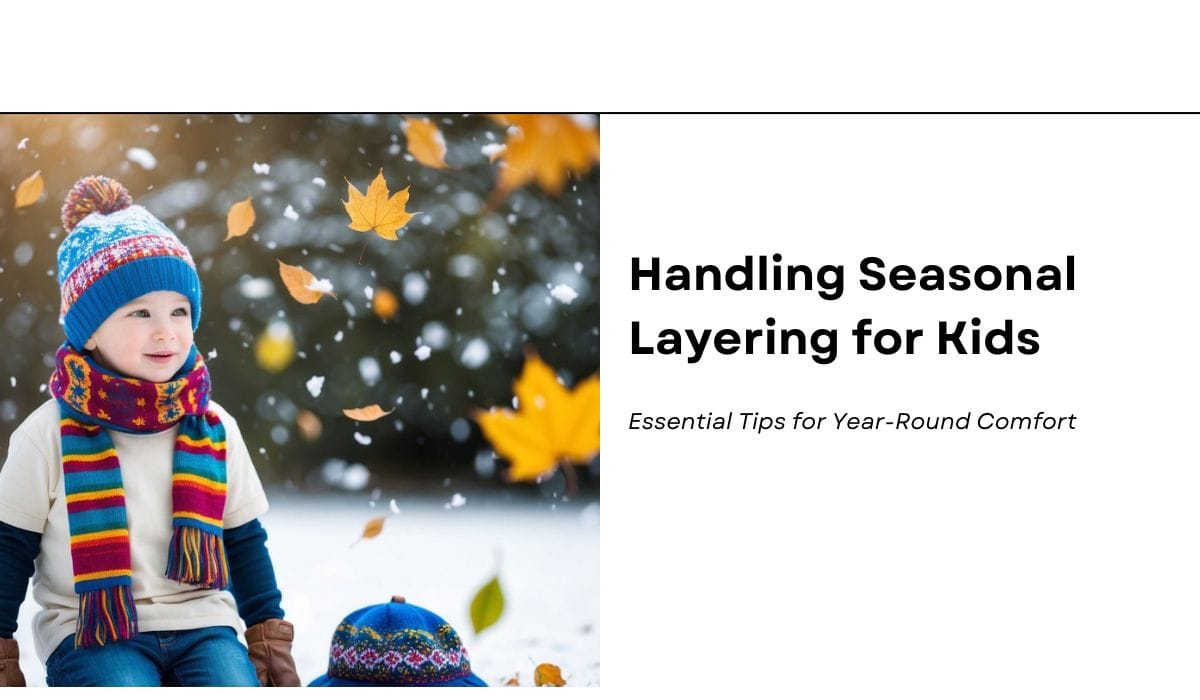As a parent, I know the challenge of dressing kids for changing seasons. It’s a constant juggling act to keep them warm, dry, and comfortable without overheating. Layering is the key to success, but it can be tricky to get right. The secret is to use three main layers: a base layer for wicking moisture, a middle layer for insulation, and an outer layer for protection from wind and rain.
I’ve learned that the right materials make a big difference. Wool or synthetic fabrics work best for base layers, while fleece is great for the middle layer. For the outer layer, a waterproof and breathable jacket is a must. It’s also important to remember that kids often need one more layer than adults in cold weather.
On This Page
Key Takeaways
- Use three layers: base, middle, and outer for optimal warmth and comfort
- Choose moisture-wicking base layers, insulating middle layers, and protective outer layers
- Adjust layers based on activity level and weather conditions
Understanding Layering Basics

Layering is key to keeping kids warm and comfy in cold weather. It’s all about using different types of clothing to trap heat and manage moisture.
The Role of Base Layers
The base layer is like a second skin. It sits right against the body and wicks sweat away. I recommend using merino wool or synthetic fabrics for this layer. They’re great at pulling moisture from the skin, keeping kids dry and warm.
Avoid cotton for base layers. It holds onto moisture and can make kids feel cold and clammy.
For the best fit, base layers should be snug but not tight. This helps them do their job of moving sweat away from the body.
Choosing the Right Middle Layer
The middle layer is all about insulation. It traps warm air close to the body. Fleece, wool, and synthetic down are top picks for this layer.
Fleece is light and dries fast. Wool keeps kids warm even when it’s damp. Synthetic down is great for really cold days.
I suggest picking a middle layer that’s easy to take on and off. Kids’ body temps can change quickly when they’re playing.
Importance of a Protective Outer Layer
The outer layer shields kids from wind, rain, and snow. It needs to be tough and water-resistant or waterproof.
Look for jackets and trousers with sealed seams. This stops water from sneaking in through the stitching.
Breathable fabrics are a must for the outer layer. They let sweat escape while keeping the elements out.
I always make sure there’s a bit of room in the outer layer. This allows for free movement and space for the other layers underneath.
Selecting Materials for Comfort and Efficacy

I’ve found that choosing the right fabrics is key for keeping kids warm and dry. The material of each layer impacts how well it insulates, breathes, and handles moisture.
The Benefits of Merino Wool
Merino wool is my top pick for base layers. It’s soft against the skin and doesn’t itch like some other wools. This natural fibre keeps kids warm even when damp.
Merino regulates body temperature well. It wicks moisture away from the skin, which helps prevent chills. I love that it’s odour-resistant too, so kids can wear it for multiple days.
For active children, merino wool breathes brilliantly. It lets excess heat and sweat escape, stopping kids from overheating during play.
When to Choose Synthetic Materials
Synthetic fabrics like polyester and nylon have their place in a child’s winter wardrobe. They’re often cheaper than natural fibres and dry very quickly.
I recommend synthetic mid-layers for high-activity days. They’re lightweight and compress easily, making them perfect for stuffing in a school bag.
Many synthetic materials are quite durable. This is great for rough-and-tumble kids who might wear through natural fibres faster.
Some synthetic blends offer excellent insulation. Fleece, for example, traps air well and stays warm even if it gets a bit damp.
Why to Avoid Cotton in Cold Conditions
I always advise against cotton for cold-weather layers. It absorbs moisture and holds it against the skin, which can lead to rapid heat loss.
Once wet, cotton loses its insulating properties. This can be dangerous in cold weather, as it may cause a child’s body temperature to drop quickly.
Cotton takes ages to dry compared to wool or synthetics. This means a damp cotton layer can stay cold and clammy for hours.
For comfort and safety, I suggest replacing cotton items with wool or synthetic alternatives in a child’s winter layering system.
Essential Winter Accessories for Kids

Keeping children warm and dry in winter requires the right gear. I’ve found some key accessories that make a big difference for outdoor play. These items protect vulnerable areas and add crucial layers of warmth.
Protective Headgear and Gloves
A good winter hat is vital. I look for snug-fitting beanies made of wool or fleece to trap heat. For very cold days, I pick hats with ear flaps or balaclavas that cover more of the face. Gloves are just as important. I choose waterproof mittens for younger kids as they’re easier to put on. For older children, I opt for gloves with touchscreen-friendly fingertips.
I always pack an extra pair of gloves. Wet hands can quickly lead to discomfort. Some gloves come with wrist cords to prevent loss. This feature is brilliant for kids who tend to misplace things.
Footwear for Keeping Feet Dry
Warm, dry feet are crucial for winter fun. I choose waterproof boots with good traction. Look for styles with removable liners for easy drying. Insulated boots are best for very cold weather.
I make sure boots are roomy enough for thick socks. A wool-blend sock wicks moisture and adds warmth. For deep snow, I use gaiters. These fit over boots and trouser legs to keep snow out.
Scarves and Insulation Extras
A neck warmer or scarf protects a vulnerable area from cold winds. I prefer neck gaiters for kids. They’re less likely to come undone or get caught on things. For extra warmth, I layer a thin fleece neck warmer under a waterproof jacket.
Thermal underwear adds a crucial base layer. I choose moisture-wicking fabrics like merino wool. These keep kids warm without overheating during active play. For bitter cold, I add an insulating mid-layer like a fleece jumper.
Hand and foot warmers are brilliant for long outdoor sessions. I tuck these into gloves and boots for extra cosiness on frigid days.
Dressing for Variable Weather Conditions

Layering is key for dressing kids in changeable weather. I’ll cover how to adjust layers for damp vs dry cold and moving between indoors and outdoors.
Layering for Damp vs. Dry Cold
In damp cold, I focus on waterproof outer layers. A breathable, waterproof jacket is essential. Under that, I add a fleece mid-layer for warmth.
For the base layer, I choose synthetic or wool fabrics that wick moisture. Cotton gets damp and cold, so I avoid it.
In dry cold, insulation is my priority. I opt for a down or synthetic-filled coat. Underneath, I layer a long-sleeve thermal top and fleece.
For both conditions, I make sure to cover extremities. Warm socks, waterproof boots, gloves, and a hat are must-haves.
Adjusting Layers for Indoor-Outdoor Transitions
I dress kids in easily removable layers for quick adjustments. A zip-up fleece over a long-sleeve tee works well.
Indoors, I remove the outer layer and fleece. The base layer should be comfortable on its own.
For heading outside, I add layers back on. A waterproof jacket goes over the fleece if it’s damp.
I keep extra layers in a backpack for unexpected weather changes. This might include a spare fleece, gloves, or rain jacket.
Breathable fabrics are crucial for all layers. They help regulate temperature as kids move between heated indoors and chilly outdoors.
Practical Tips for Layering Young Children

Dressing kids for changing weather can be tricky. I’ll share some key strategies for layering babies and helping older children manage their own comfort.
Layering Strategies for Babies
For babies, I start with a thin base layer like thermal underwear or a onesie. Next, I add a fleece layer for warmth. Fleece is great because it’s soft and breathable. For outdoor trips, I pop on a waterproof outer layer.
I’m careful not to overdress babies. I check their neck or tummy – if it’s sweaty, I remove a layer. For sleep, I use sleep sacks instead of blankets for safety.
In cold weather, I put mittens and a hat on babies. For wet days, I make sure to pack extra clothes.
Teaching Kids to Self-Regulate Their Comfort
As kids grow, I teach them to adjust their own layers. I explain how different clothes work:
- Base layer: Wicks sweat
- Middle layer: Keeps warm
- Outer layer: Blocks wind/rain
I show them how to add or remove items based on how they feel. We practice at home before heading out.
I let them pick fun accessories like colourful hats or cool gloves. This gets them excited about dressing for the weather.
For active kids, I suggest starting cool. They’ll warm up as they play. I remind them to drink water even when it’s cold out.

